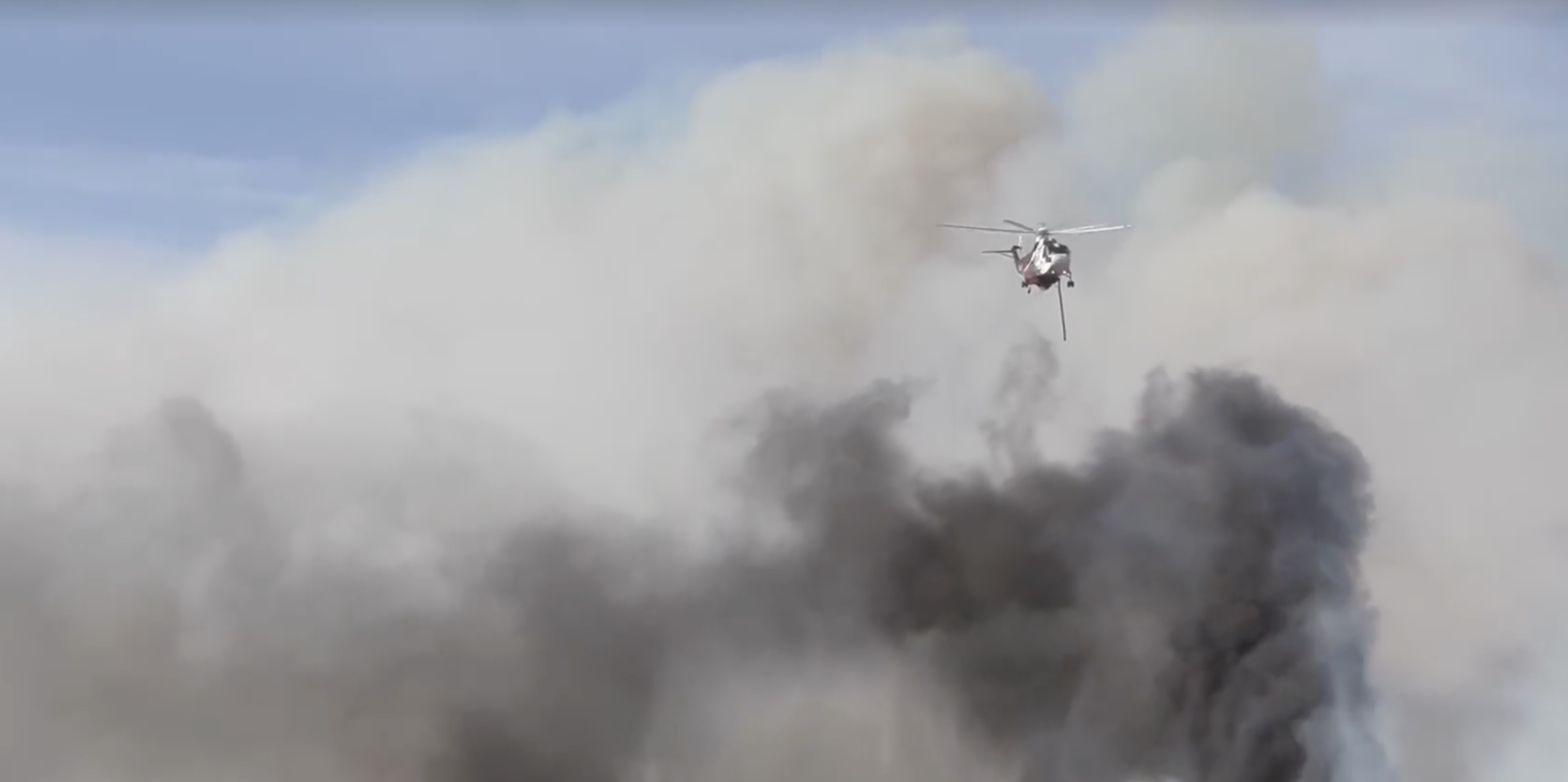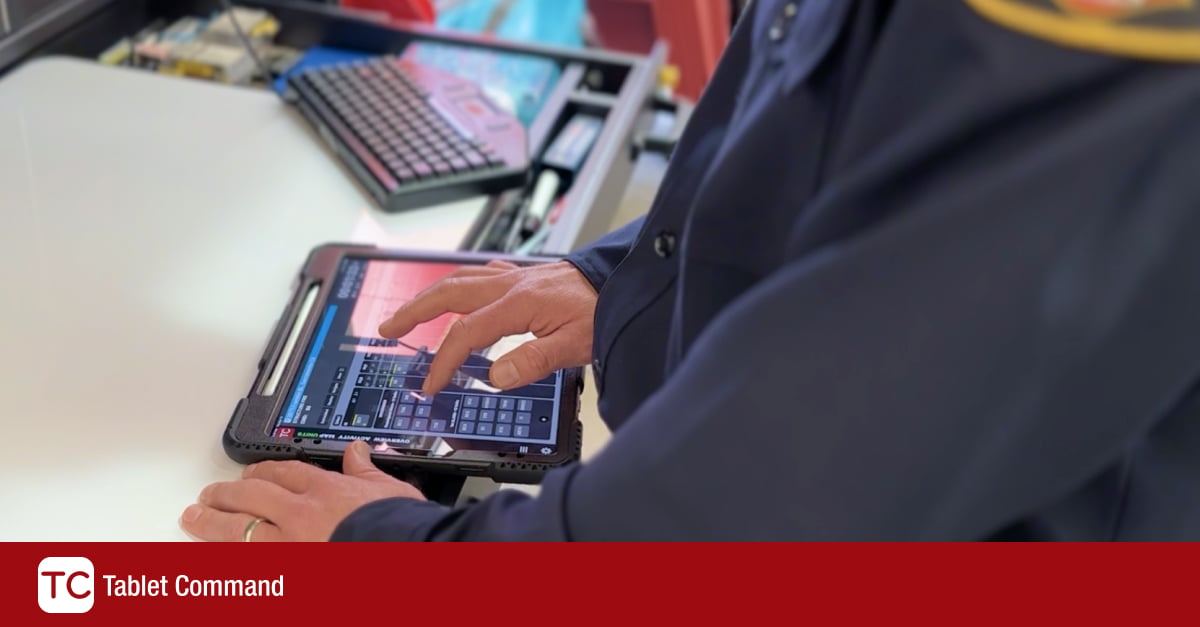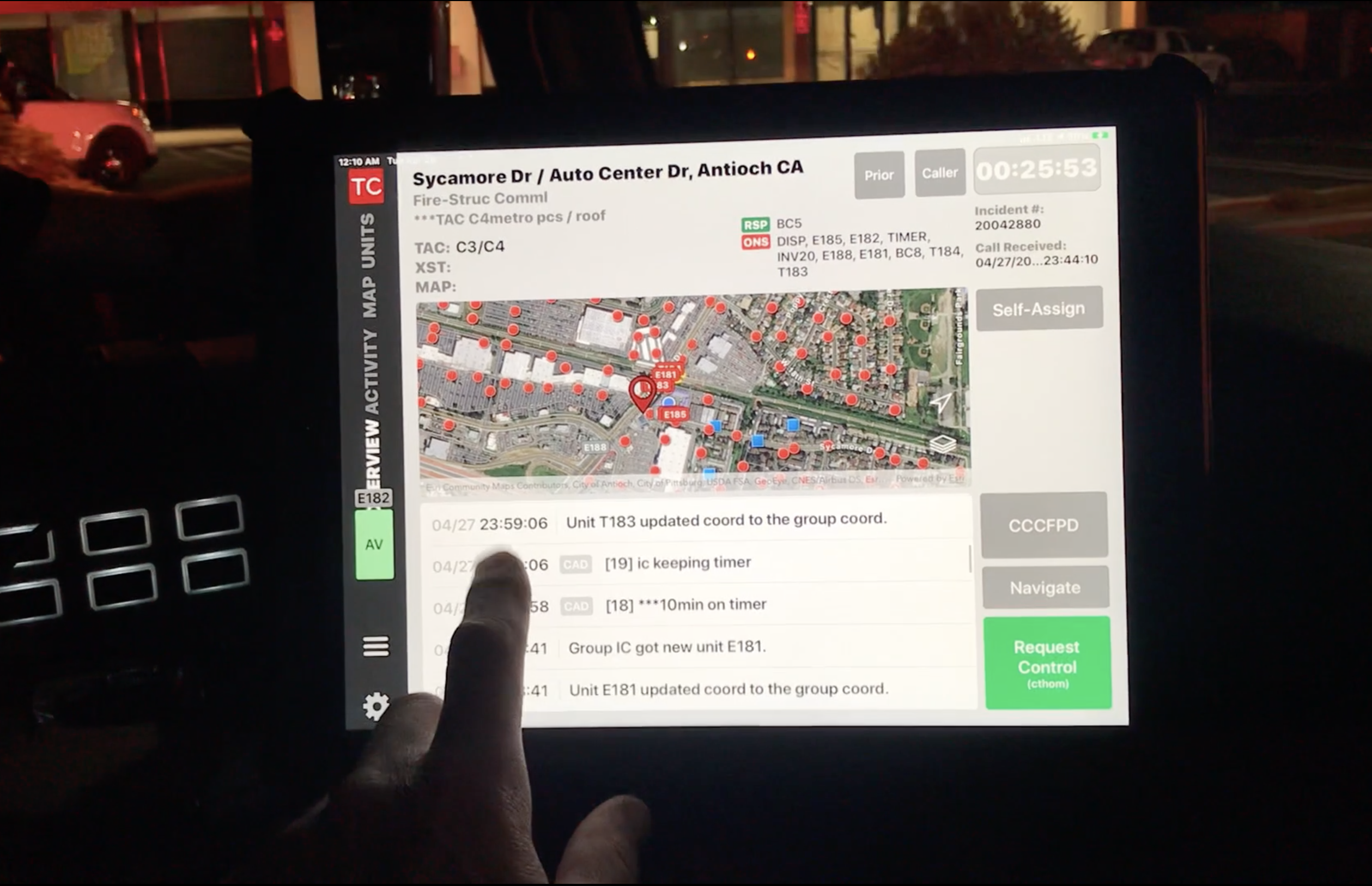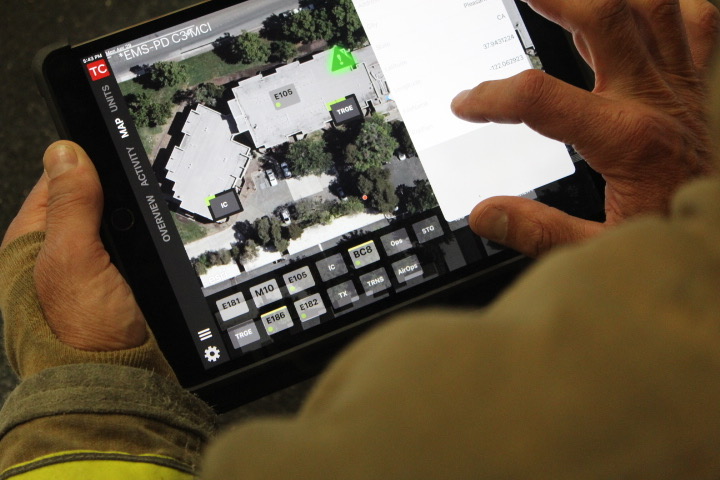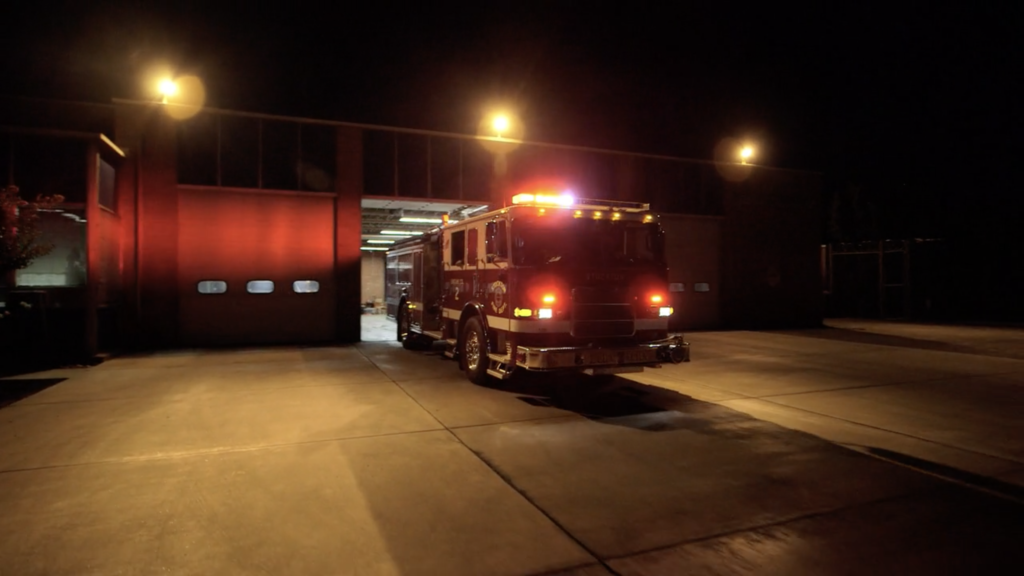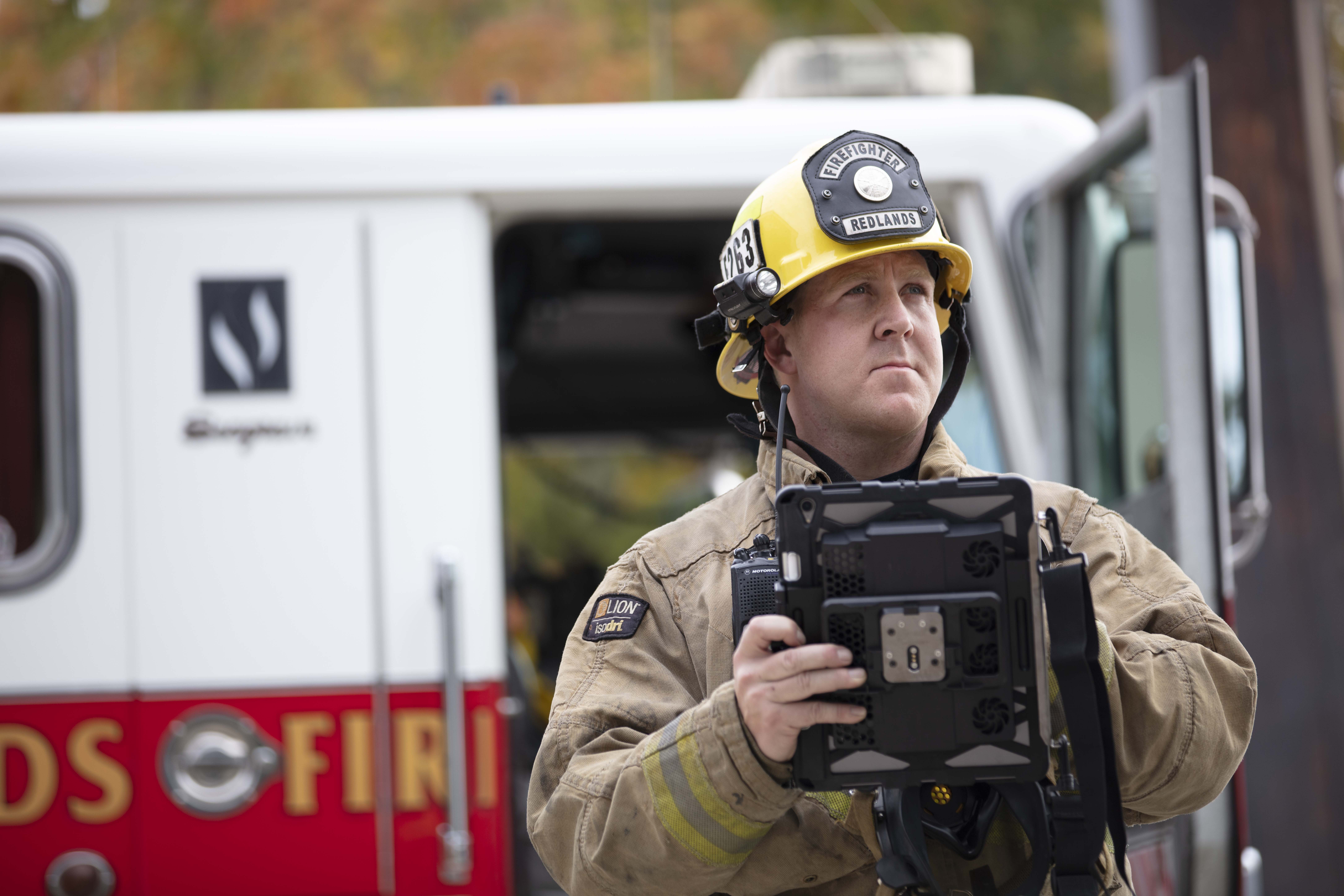When station alerting goes off, the response begins. Crews check the incident location, review cross streets and hydrant maps, then gear up and board the rig. In the cab, the captain monitors the Mobile Data Terminal (MDT), connected to the Computer-Aided Dispatch (CAD) system, and relays updates from dispatch. These may include a call being upgraded to a cardiac arrest or a fire incident adding details about a trapped occupant.
Topics: incident management software
Tablet Command: Modern Tools for Modern Incidents
The complexity of emergency response continues to grow. Multi-alarm fires, large-scale incidents, and regional mutual aid require coordination that goes beyond maps, whiteboards, or memory. Tablet Command was created to meet this need by giving every responder real-time access to the same critical information.
Topics: Fire Command, technology
The Next Step in Incident Management: A Single Pane of Glass
On the fireground, a whiteboard has long been a trusted tool. Commanders sketch divisions, write assignments, and track accountability. It works, but it has limits. A marker and board can only capture so much, and the information stays at the tailboard.
Topics: incident response, technology
Staying Ahead of the Storm: How iNWS Keeps First Responders Prepared
As an Assistant Fire Chief, one critical way I stayed ahead of significant weather events was by subscribing to iNWS (Integrated National Weather Service) Mobile Alerts. Whether it was high temperatures, high winds, or red flag warnings, having foresight into these events was paramount. iNWS allowed me to be proactive in my decision-making, giving me and thus my team, the advanced notice to prepare for what was coming.
Topics: mobile incident software, iNWS
Digital Incident Command: What Changes When Command Uses Tablet Command
Topics: Fire ground accountability, technology
Incident Sharing: What It Solves and How to Use It
At Tablet Command, we believe information should move as fast as your response. That’s why we developed Incident Sharing- a feature designed to enhance situational awareness and coordination across agencies. It’s built to keep everyone aligned- before, during, and after the call.
Topics: Fire Command, Incident Sharing
Beyond the Whiteboard: Puget Sound’s Operational Upgrade
When departments merge, unifying tactics can be one of the hardest parts. That was the challenge facing Puget Sound Regional Fire Authority- a Washington agency responsible for more than 260,000 residents and 120 square miles of coverage, built through multiple consolidations.
Topics: Accountability, mutual aid, Fire Command
Topics: Fire Command, Digital
10 Operational Advantages of Tablet Command in the Field
Tablet Command supports crews and command staff throughout every stage of a response- from the moment a call is dispatched to the final documentation of an incident. Here are ten operational advantages that show how.
Topics: standardized operations, Fire Command
In the fire service, staying connected is not just important- it’s critical. Connectivity enables accurate location tracking, situational awareness, and real-time updates, giving crews the information they need to make informed decisions in dynamic environments.
Topics: Fire, TC Mobile, Connectivity
-1.jpg)
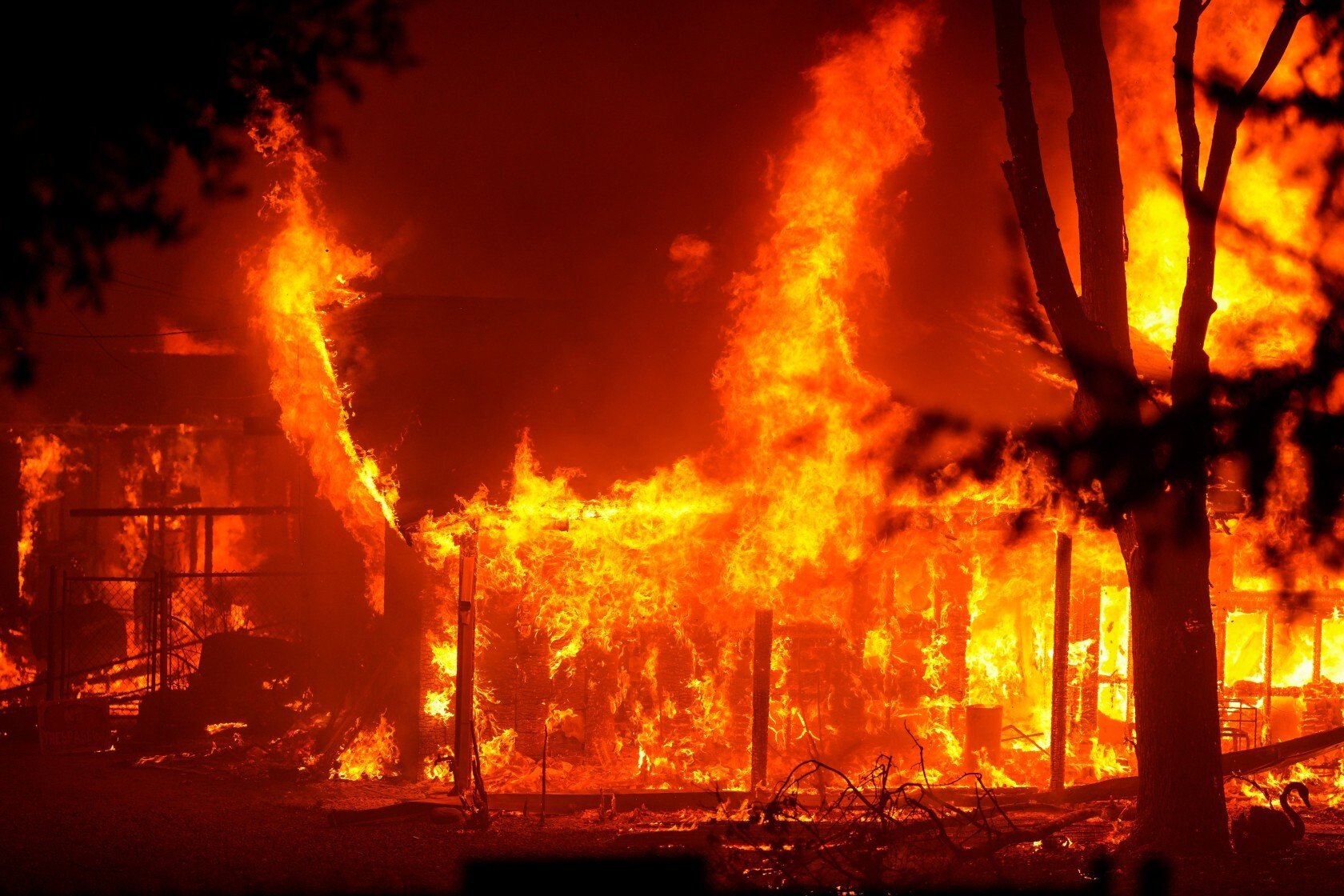
.png)
